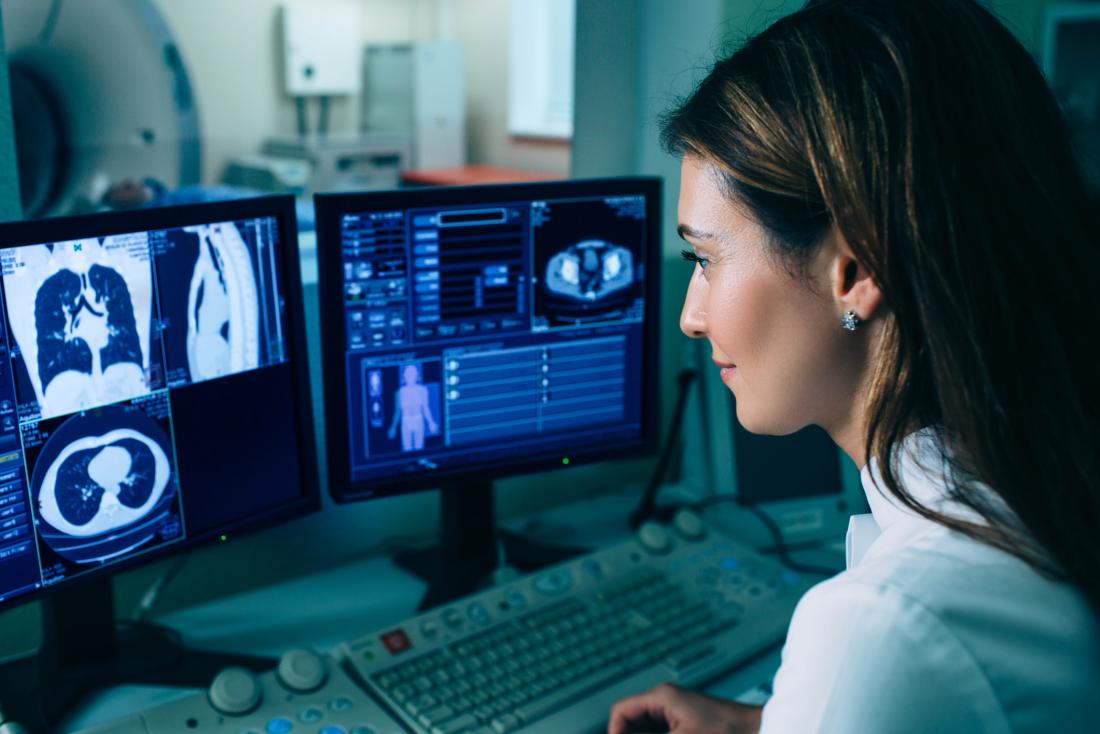Artificial intelligence better than humans at spotting lung cancer

Researchers have used a deep-learning algorithm to detect lung cancer accurately from computed tomography scans. The results of the study indicate that artificial intelligence can outperform human evaluation of these scans.
Lung cancer causes almost 160,000 deaths in the United States, according to the most recent estimates. The condition is the leading cause of cancer-related death in the U.S., and early detection is crucial for both stopping the spread of tumors and improving patient outcomes.
As an alternative to chest X-rays, healthcare professionals have recently been using computed tomography (CT) scans to screen for lung cancer.
In fact, some scientists argue that CT scans are superior to X-rays for lung cancer detection, and research has shown that low-dose CT (LDCT) in particular has reduced lung cancer deaths by 20%.
However, a high rate of false positives and false negatives still riddles the LDCT procedure. These errors typically delay the diagnosis of lung cancer until the disease has reached an advanced stage when it becomes too difficult to treat.
New research may safeguard against these errors. A group of scientists has used artificial intelligence (AI) techniques to detect lung tumors in LDCT scans.
Daniel Tse, from the Google Health Research group in Mountain View, CA, is the corresponding author of the study, the findings of which appear in the journal Nature Medicine.
'Model outperformed all six radiologists'
Tse and colleagues applied a form of AI called deep learning to 42,290 LDCT scans, which they accessed from the Northwestern Electronic Data Warehouse and other data sources belonging to the Northwestern Medicine hospitals in Chicago, IL.
The deep-learning algorithm enables computers to learn by example. In this case, the researchers trained the system using a primary LDCT scan together with an earlier LDCT scan, if it was available.
Prior LDCT scans are useful because they can reveal an abnormal growth rate of lung nodules, thus indicating malignancy.
In the current study, the AI provided an "automated image evaluation system" that accurately predicted the malignancy of lung nodules without any human intervention.
The researchers compared the AI's evaluations with those of six board-certified U.S. radiologists who had up to 20 years of clinical experience.
When prior LDCT scans were not available, the AI "model outperformed all six radiologists with absolute reductions of 11% in false positives and 5% in false negatives," report Tse and colleagues. When previous imaging was available, the AI performed just as well as the radiologists.
Study co-author Dr. Mozziyar Etemadi, a research assistant professor of anesthesiology at Northwestern University Feinberg School of Medicine in Chicago, explains why AI can outperform human evaluation.
"Radiologists generally examine hundreds of 2D images or 'slices' in a single CT scan, but this new machine learning system views the lungs in a huge, single 3D image," Dr. Etemadi says.
